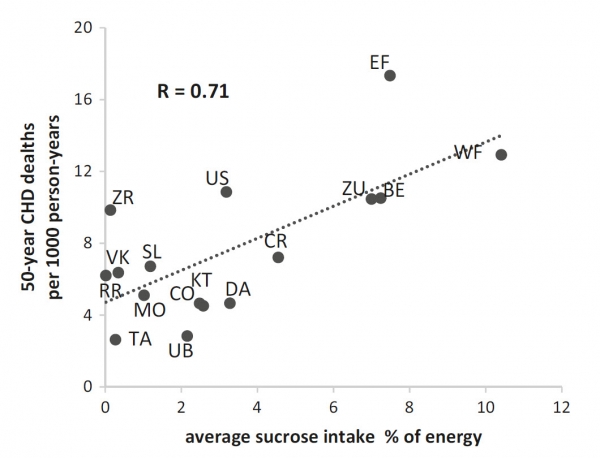Cross-cultural associations:
Average sucrose intake and 50-year coronary heart disease mortality rates in 16 cohorts
Dietary sugars consist of mono-and disaccharides and can be divided into naturally occurring sugars present in fruit (glucose and fructose), milk (lactose and galactose), grains (bread and pasta) (maltose) and added sugar (sucrose). In the 1960s traditional Western diets were high in sucrose, while the traditional Mediterranean and Japanese diets were low. The average intake of sucrose was related to 50-year CHD mortality rates (R = 0.71) but the naturally occurring sugars were not thus associated. In addition, the sucrose intake was positively associated with saturated fat intake (R=0.63).

Relationship of average population sucrose intake at baseline with 50-year CHD death rates. US: US railroad; EF: East Finland; WF: West Finland, ZU: Zutphen, the Netherlands; CR: Crevalcore, Italy; MO: Montegiorgio, Italy; RR: Rome railroad, Italy; DA: Dalmatia, Croatia; SL: Slavonia, Croatia; VK: Velika Krsna, Serbia; ZR: Zrenjanin, Serbia; BE: Belgrade, Serbia; KT: Crete, Greece; CO: Corfu, Greece; TA: Tanushimaru, Japan; UB: Ushibuka, Japan
Application
In 2015, the WHO endorsed an added sugar (sucrose) recommendation of <50 g/day and suggested a further reduction to 25 g/day. This accords with the low CHD risk associated with the traditional Mediterranean and Japanese dietary patterns that contained <25 g of added sugar per day.
